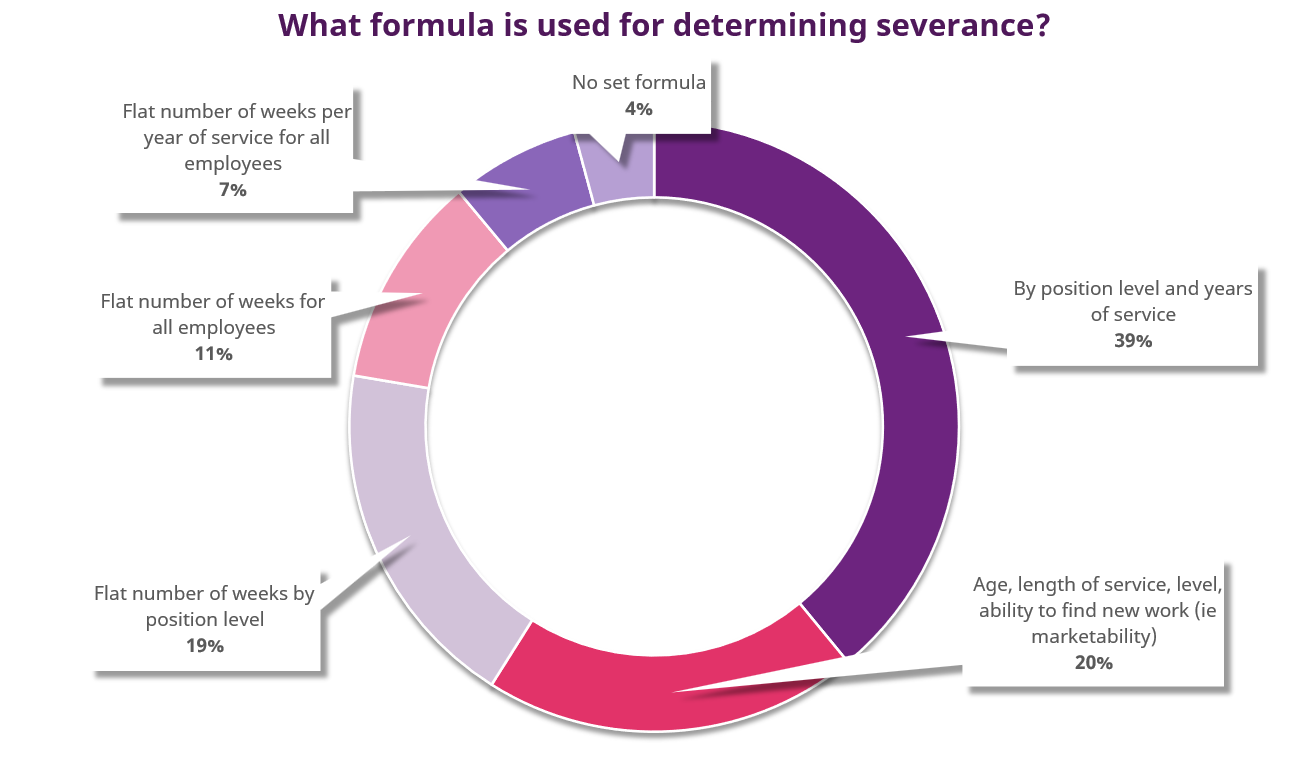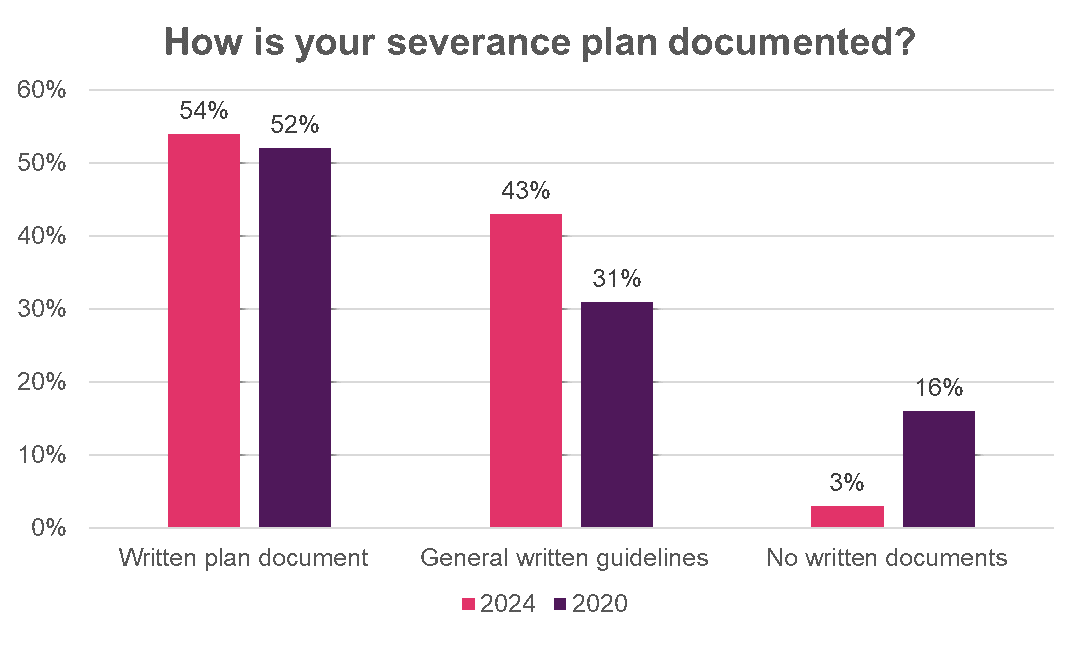How Much Severance Should Companies Pay?
min
In recent years, companies have significantly increased their severance packages, reflecting a growing recognition of the importance of supporting employees during career transitions. According to LHH's 9th Severance and Separation Benchmark Report, there has been a dramatic 72% increase in severance package generosity from 2020 to 2025.

This trend spans across industries, with some sectors showing particularly notable increases:
- Financial services: 84% increase
- Technology: 81% increase
- Media and entertainment: 88% increase
- Even nonprofits have increased their severance offerings by 30%
How Companies Calculate Severance
Organizations use various formulas to determine severance payments.
- 39% by position level and years of service
- 20% by age, length of services, level, ability to find new work (i.e. marketability)
- 19% by flat number of weeks by position level
- 11% by flat number of weeks for all employees
- 7% by flat number of weeks per year of service for all employees
- 4% have no set formula

The most common ways to determine severance payments are:
- Position Level and Years of Service: The most prevalent method combines an employee's position in the company with their tenure to calculate severance pay. This approach ensures that both experience and organizational role are factored into the final package.
- Age and Length of Service: Some companies consider an employee's age alongside their years of service, recognizing that older workers may face different challenges in the job market.
- Marketability Assessment: A more subjective approach where companies evaluate how easily an employee might find new work based on their skills and market conditions.
- Some organizations opt for simpler approaches, such as:
- A flat number of weeks based on position level
- A standard number of weeks for all employees
- A fixed number of weeks per year of service
Senior Positions Command Higher Severance
The data clearly shows that more senior positions typically receive more generous severance packages. Here's how it typically breaks down by position level:

- C-suite executives receive the most substantial packages with CEO and Senior Management getting an average of 16 weeks
- Directors receive the next tier of benefits at 15 weeks
- Managers and supervisors fall into the middle range at 13 and 12 weeks respectively
- Exempt and non-exempt employees typically receive more modest packages at 8-9 weeks
This tiered approach reflects both the market reality of executive compensation and the typically longer job search periods for senior positions.
The Broader Context
The increase in severance generosity isn't happening in isolation. It reflects several key factors:
- Growing recognition of employer brand importance
- Increased employee anxiety about job transitions
- The ongoing evolution of the global workforce
- Competition for talent across industries
Companies are increasingly viewing severance not just as a separation benefit, but as a crucial component of their overall employer brand and talent strategy. In today's competitive job market, having a robust severance policy can be a key differentiator in attracting and retaining top talent.
Severance Formalization
Organizations are also increasingly formalizing their severance policies, with 91% having reviewed their policies in the last two years. This reflects a growing understanding that clear, well-documented severance policies are essential for both risk management and employee relations.

In 2020, only 31% of organizations had written guidelines for documenting their severance plans, but that number jumped to 43% by 2024.
As the workplace continues to evolve, companies would do well to regularly review and update their severance policies to ensure they remain competitive and supportive of their workforce strategies.
Summary
Companies are increasingly offering more generous severance packages, reflecting a greater emphasis on supporting employees during transitions. This shift, driven by factors like competition for talent and evolving workforce dynamics, highlights the importance of having a well-structured severance policy. By regularly reviewing and updating these policies, organizations can not only improve employee relations but also strengthen their employer brand.
If you’re interested in learning more about how your severance policies compare to your peers, get in touch!